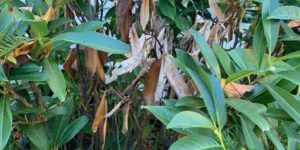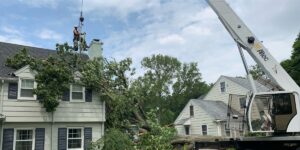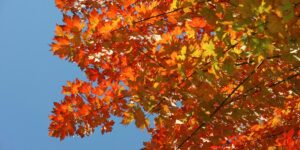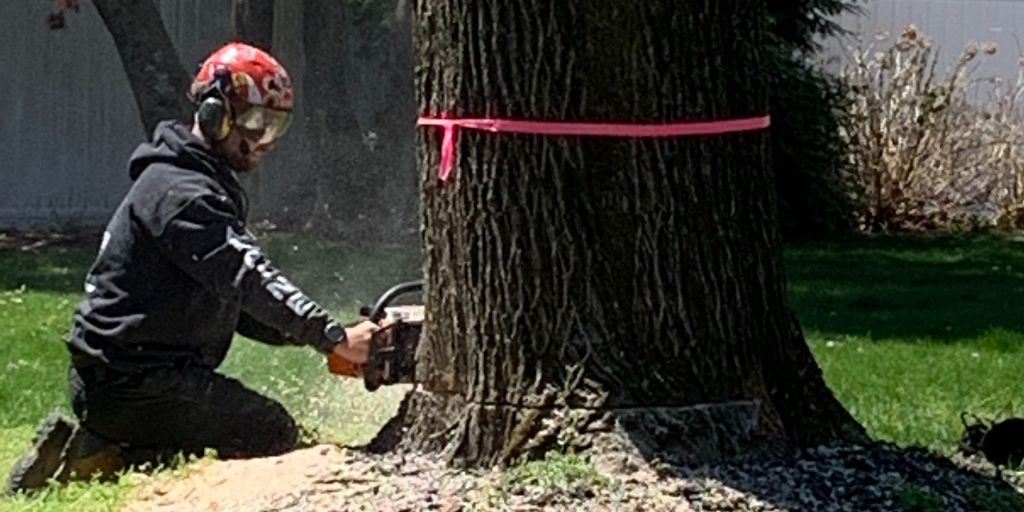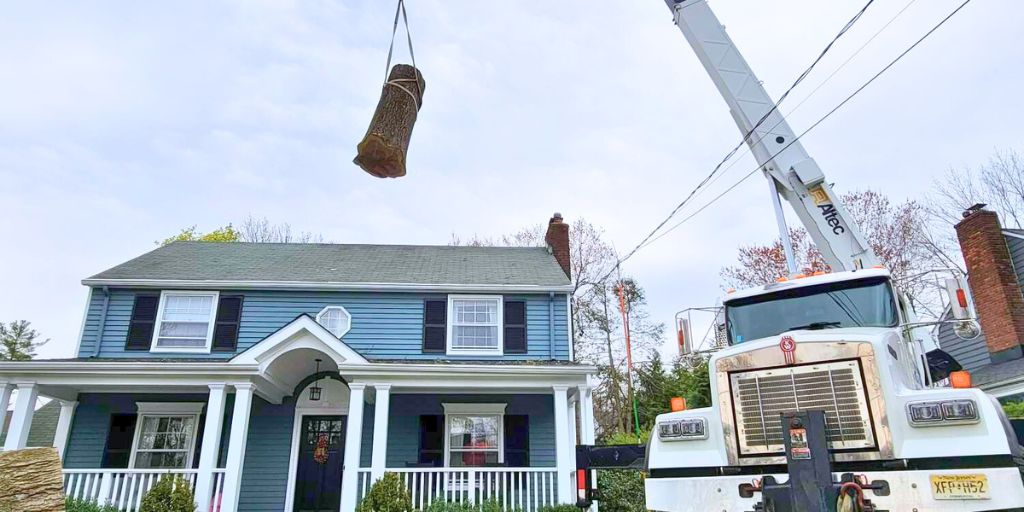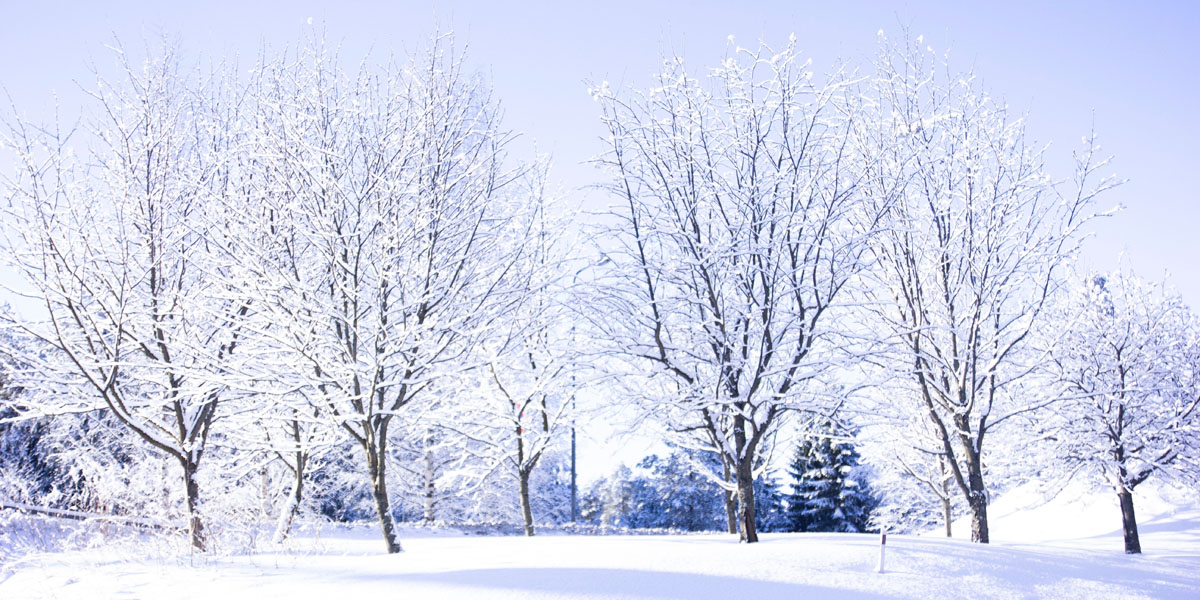Dead ash trees pose a serious threat, especially when they’re close to homes, power lines, or other structures. Their weakened state makes them unpredictable and prone to sudden collapse, which can lead to devastating property damage or serious injuries. Removing dead ash trees isn’t just difficult – it’s one of the most dangerous jobs in tree care and requires specialized expertise to do it safely.
PRO TIP: Want to learn more about the intricacies of tree removal and tree work in the Morris County area of New Jersey? Check out our previous blog posts on the topic:
Key Takeaways
- Dead ash trees are dangerously brittle and can fail without warning, posing significant risks to people, property, and structures nearby.
- Emerald ash borer (EAB) damage is often hidden, making it difficult to detect a tree’s instability until it’s too late.
- Removing dead ash trees is challenging and often requires cranes or bucket trucks since their brittle wood makes it unsafe for climbers.
- Felling dead ash trees is rarely an option due to their size and the proximity of structures and utility lines, especially in residential areas.
- Only trained professionals with the proper equipment should handle dead ash tree removal to ensure safety and minimize damage.
Why Dead Ash Trees Are So Dangerous
All trees, whether healthy or struggling, come with some level of risk to your property. When trees are healthy, the benefits they provide far outweigh those risks. But when they’re unhealthy, trees can become dangerous for your home and family.
Dead ash trees, in particular, are a growing concern. The emerald ash borer (EAB) continues to destroy ash trees across New Jersey, leaving behind brittle, unstable trees that can fail without warning. As this invasive pest continues to spread, the risks posed by dead ash trees keep rising.
If you have ash trees on your property, it’s important to keep a close eye out for any signs of trouble. In Morris County, local officials have already started removing ash trees along public roads to prevent accidents. For homeowners, the threat is even greater because EAB damage isn’t always visible, and dead ash trees are extremely brittle and unpredictable.
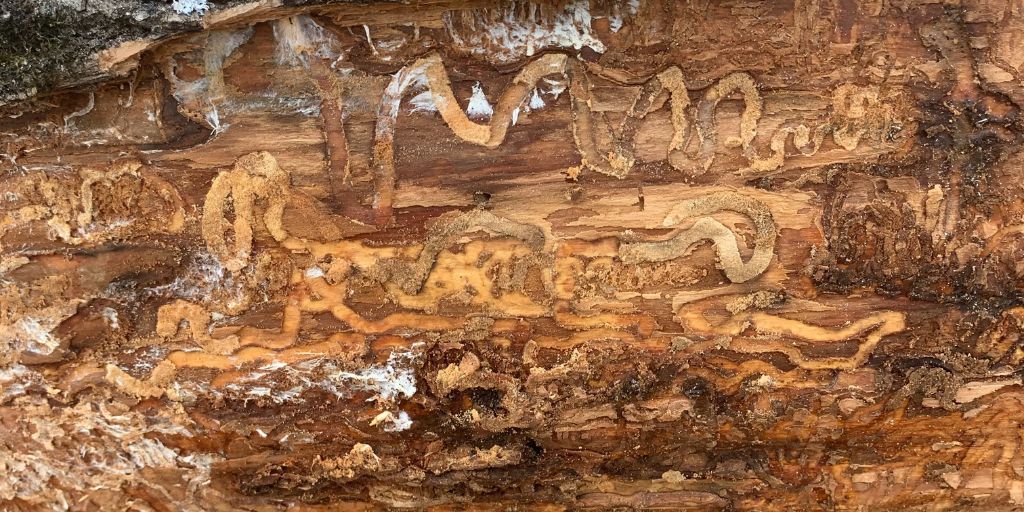
The “gallery” left from an infestation of emerald ash borer.
The Damage is Not Always Apparent
Unlike storm damage, where the harm is visible and apparent, you won’t be able to see the damage from EAB. The insect feeds on the sapwood under the bark, limiting an ash tree’s ability to transport water throughout the tree. Your ash tree may look fine at a glance, but underneath the bark, there will be the trademark “gallery” left by EAB feeding.
Eventually, the damage from EAB will kill the tree and cause the branches to die. As soon as you notice the dead branches, it is probably too late to save your tree. But it should be a wake-up call to contact an arborist and have them examine your tree and determine the next steps.
The Wood is Brittle and Weak
Like most deciduous trees, ash have a thin layer of water conducting tissue (the xylem). EAB grubs feed on this tissue and disrupt or completely cut off the flow of water and nutrients to the canopy. The tree will dry out, making the wood very weak and brittle.
One day, your ash tree might look perfectly healthy. The next, a large limb could suddenly snap and fall – even on a calm, windless day. And when a storm rolls in with high winds, the entire tree might come crashing down without any warning.
Removing Dead Ash Trees Is Often Difficult
Dead ash trees are not only dangerous, but they also pose a challenge during removal.
Normally, when a tree care company removes a tree, they will have climbers in the tree to assist with the process. The climbers will cut the tree into smaller sections and then lower them to the ground with the help of rigging or a crane.
Due to the brittle nature of the trees, we can’t use a climber to remove dead ash trees. The tree is not strong enough to support the weight of an adult and too brittle for us to set up a safe tie in point. For this reason, many tree care companies won’t or can’t remove dead ash trees.
There are two options to remove dead ash trees: felling the tree or using high-end technology like cranes and bucket trucks.
Felling Dead Ash Trees is Often Not Viable
Felling a tree is the simplest way to remove a tree, but it has at least one drawback. Ash trees can grow to beyond 50 feet at full maturity. Their large size makes it challenging to find the space to fell them, especially in smaller yards that are common throughout Morristown, New Jersey. When nearby structures or utility lines are present, felling becomes impossible, requiring more specialized techniques for safe removal.
Removing Dead Ash Trees Sometimes Requires Cranes and Bucket Trucks
Cranes and bucket trucks have revolutionized how we safely remove dead ash trees, especially since climbers can’t work in these brittle, hazardous trees. When space allows, we can often use a bucket truck to carefully take the tree down piece by piece, minimizing risk while keeping everyone on the ground. However, if your ash tree is near a structure like a patio or deck, we’ll turn to our tree-removal crane.
Cranes are ideal for tight spaces or challenging setups. By securing sections of the tree to the crane, we can lift them away without relying on a large drop zone. Each piece is carefully lowered to the ground, where our crew safely disposes of it. This method not only eliminates the need for climbers but also ensures precision and safety throughout the process.
WARNING: Always have a professional handle dead ash tree removal. Homeowners don’t have the proper training and equipment to do the job safely.
Frequently Asked Questions About Ash Trees
What can I do with the wood from dead ash trees in New Jersey?
You can use the wood from dead ash trees as mulch if a tree care company chipped it to one inch or smaller pieces. If you plan to use the wood as firewood, wrap it in tarps to prevent spreading EAB to nearby trees. Do not transport wood from EAB-killed ash trees to avoid spreading the insect to a new habitat.
Can I save my ash trees from emerald ash borer?
Yes, you can save your mature ash trees from EAB with preventive treatments. Injected insecticides can kill EAB and prevent it from reproducing. Talk to an arborist about treating your ash trees every one to three years.
How do I know if my tree has an EAB infestation?
Most EAB symptoms happen underneath the bark and aren’t visible. Some of the symptoms you can see include branch dieback and increased woodpecker activity.
Should I preemptively remove my ash trees in Morris County, NJ?
The New Jersey State Forest Service has worked to remove ash trees in forests as a way to limit the damage from EAB. For homeowners, you may want to schedule preventive treatments before jumping to removal.
Alpine Tree Has the Necessary Equipment and Training to Remove Dead Ash Trees
Dead ash tree removal requires a delicate touch and plenty of training. If you are worried about the ash trees on your property, don’t put yourself at risk by taking a DIY approach. Have a professional handle the removal process.
Our team has the training to safely and efficiently remove dead ash trees. Call us today at 973-964-7798 or request an appointment online to take care of your risky ash trees.


